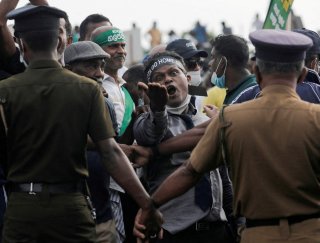Sri Lanka’s Economic Crisis Is Just the Beginning
With oil prices hovering around dangerously high levels, Europe’s energy crisis driving the price of coal to its record high, rising interest rates, and lingering supply chain disruptions, we may expect other countries to be in similar or related financial trouble.
Sri Lanka is facing a full-blown economic crisis as the country is cash-strapped and unable to finance its imports. The fact that the government had to cancel recent school examinations because they couldn’t afford to import paper depicts the magnitude of the problem. However, this does not come as a surprise. At its peak, the pandemic brought the world to a screeching halt as countries imposed lockdowns and consumption, along-with travel (therefore, tourism), dropped to frighteningly low levels. Unfortunately, with rising interest rates, record-high public debt, and a flush of cash in society, such instances will be repeated across the world.
Just like any other crisis, the one in Sri Lanka didn’t happen overnight; there were signs all along. In September 2021, there was news that revenue from the Sri Lankan tourism sector, which contributed 10 percent to the country’s $81 billion GDP, has fallen to $2 million a month as compared to $450 million two years back signaling a serious fall in government revenue. During the pandemic, in February, there were 2,000 containers at its port with goods that couldn’t be released only because $35 million was required for clearance.
However, it started even before that. Back in 2019, Mahinda Rajapaksa’s government took some popular measures that slashed tax rates, as it had promised to do during its campaign. The value-added tax was halved, and the measure received criticism from central bankers as well. Along with this measure, the pandemic caused Sri Lanka to impose widespread lockdowns and the tourism sector took a big blow as traveling was halted on a global scale. Economic growth had already slowed down from droughts in 2017 and terrorist activities such as Easter Sunday attack. This, along with a reduction in tax rates and Covid-19, served as a perfect recipe for what has now become a Balance of Payment (BoP) crisis. In simple terms, it means that the amount of money leaving the country is more than what is coming in.
Foreign exchange reserves, at the heart of this crisis, have dropped 70 percent in the last two years and now stand at $2.36 billion from $7.5 billion. The country has to pay $4 billion in debt servicing and other payments which are due in 2022—as early as July. Along with this, Foreign Direct Investment (FDI) has also taken a hit and has dropped to $548 million in 2020 from $1.6 billion in 2018. After the government cut taxes and economic issues ensued, rating agencies further downgraded the country’s profile in 2020 that further blocked its access to capital markets in order to raise money, exacerbating the issue.
Like everywhere else in the world, inflation is high at 15.1 percent while food inflation (about which I have written here) is at a staggering 26 percent. Rising food prices are directly linked with an increase in social unrest that leads to political instability. In Sri Lanka, two people died waiting in line for fuel, triggering countrywide protests. Such developments are the absolute opposite of what the incumbent political leadership was expecting. One of the reasons that the country refused to go to the International Monetary Fund was because mustering popular support for implementing the Fund’s recipe can often result in further austerity that exacerbates the economic crisis, especially for the common man. The Sri Lankan rupee has fallen 30 percent, which will only contribute to the current inflationary pressures.
All of these developments are a direct result of Covid-19 and the shock it gave to the global economy. Global debt during the pandemic rose to $226 trillion touching 256 percent of global GDP, a rise of 28 percent in one year. Emerging markets further dragged the number all the way to a staggering $303 trillion in 2021 (with debt to GDP ratio now at 351 percent). What is more alarming is that 80 percent of the increase in debt came from emerging markets. Along with this, the interest of foreign investors in emerging markets has been at its lowest since 2009.
In this context, a rising interest rate in the United States by the Federal Reserve spells further trouble for the global economy, especially the emerging markets and developing economies. All of these countries service their debt in dollars. Rising interest rates make the dollar appreciate against other currencies and, therefore, can put pressure on the countries’ foreign exchange reserves. This leads to further weakening of the various currencies and the vicious cycle goes on. Also, all the commodities are priced in dollars. A rising dollar, therefore, makes it difficult for these countries to buy, say, oil, wheat, and copper.
As far as Sri Lanka is concerned, it has started negotiations with the IMF and the World Bank has also promised to provide support. The country is also seeking a currency swap and loans from China (of about more than $2 billion) and India as well.
With oil prices hovering around dangerously high levels, Europe’s energy crisis driving the price of coal to its record high (upon which many developing countries depend as a source of energy), rising interest rates, and lingering supply chain disruptions, we may expect other countries to be in similar or related financial trouble.
Osama Rizvi is an economic and energy analyst at Primary Vision Network.
Image: Reuters.

